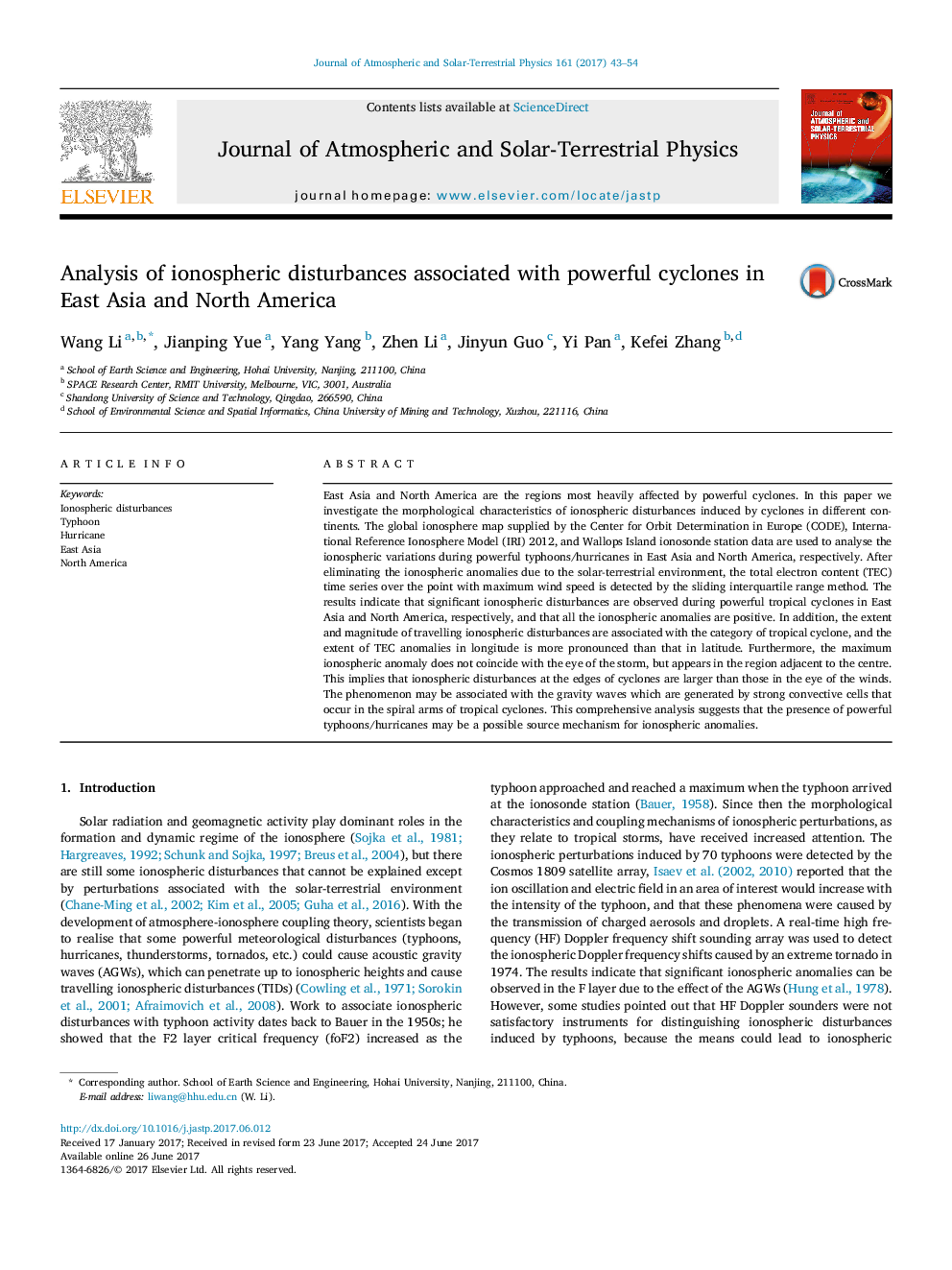| Article ID | Journal | Published Year | Pages | File Type |
|---|---|---|---|---|
| 5487586 | Journal of Atmospheric and Solar-Terrestrial Physics | 2017 | 12 Pages |
Abstract
East Asia and North America are the regions most heavily affected by powerful cyclones. In this paper we investigate the morphological characteristics of ionospheric disturbances induced by cyclones in different continents. The global ionosphere map supplied by the Center for Orbit Determination in Europe (CODE), International Reference Ionosphere Model (IRI) 2012, and Wallops Island ionosonde station data are used to analyse the ionospheric variations during powerful typhoons/hurricanes in East Asia and North America, respectively. After eliminating the ionospheric anomalies due to the solar-terrestrial environment, the total electron content (TEC) time series over the point with maximum wind speed is detected by the sliding interquartile range method. The results indicate that significant ionospheric disturbances are observed during powerful tropical cyclones in East Asia and North America, respectively, and that all the ionospheric anomalies are positive. In addition, the extent and magnitude of travelling ionospheric disturbances are associated with the category of tropical cyclone, and the extent of TEC anomalies in longitude is more pronounced than that in latitude. Furthermore, the maximum ionospheric anomaly does not coincide with the eye of the storm, but appears in the region adjacent to the centre. This implies that ionospheric disturbances at the edges of cyclones are larger than those in the eye of the winds. The phenomenon may be associated with the gravity waves which are generated by strong convective cells that occur in the spiral arms of tropical cyclones. This comprehensive analysis suggests that the presence of powerful typhoons/hurricanes may be a possible source mechanism for ionospheric anomalies.
Related Topics
Physical Sciences and Engineering
Earth and Planetary Sciences
Geophysics
Authors
Wang Li, Jianping Yue, Yang Yang, Zhen Li, Jinyun Guo, Yi Pan, Kefei Zhang,
